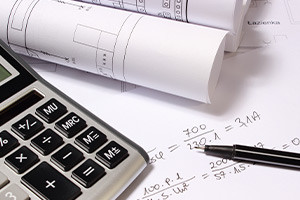This course introduces you to the concept of relative isotopic and atomic masses, and how to use the relative atomic mass to calculate the relative molecular and formula masses. It also teaches you how to deduce the empirical and molecular formulas, balance chemical equations, write ionic equations, simplify precipitation equations, and calculate the formal charges. The material then moves on to give you a clear explanation of the units used to describe the amount of a substance, and how to convert between them. It also discusses formulas used to deduce the moles of a reaction, volumes, concentrations, percentage composition by mass, and Avogadro’s number. You will learn acid/base titrations and how to use the information of one solution to deduce the concentration of another solution using titration.
The key points covered in the course are: the relative atomic mass is the weighted average mass of atoms of an element, the relative molecular mass is the sum of the relative atomic masses of elements in a compound and the relative isotopic mass of a substance can be calculated using a mass spectrometer. The mole is the IS unit used to describe the amount of a substance: one mole of a substance contains a number of particles equal to the same number found in 12 grams of carbon-12. The molecular formula is a set of symbols used to describe the total number of atoms in a compound. The simplification of the molecular formula is called the empirical formula. The mole can be used to calculate reacting masses in grams, volumes of gases in cubic centimetres, and volumes and concentration of solutions.The stoichiometry of a reaction is the molecular ratio of reactants and products; it can be calculated using the volumes, concentrations, and masses of the reactants and products.
The basic concepts of describing a chemical reaction and the stoichiometry of a reaction are essential skills for any student who is enrolled in any science major. This free online course will help you understand and practice your knowledge of the included topics using examples, and exercises.
What You Will Learn In This Free Course
View All Learning Outcomes View Less All Alison courses are free to enrol, study, and complete. To successfully complete this Certificate course and become an Alison Graduate, you need to achieve 80% or higher in each course assessment.
Once you have completed this Certificate course, you have the option to acquire an official Certificate, which is a great way to share your achievement with the world.
Your Alison certificate is:
- Ideal for sharing with potential employers.
- Great for your CV, professional social media profiles, and job applications.
- An indication of your commitment to continuously learn, upskill, and achieve high results.
- An incentive for you to continue empowering yourself through lifelong learning.
Alison offers 2 types of Certificate for completed Certificate courses:
- Digital Certificate: a downloadable Certificate in PDF format immediately available to you when you complete your purchase.
- Physical Certificate: a physical version of your officially branded and security-marked Certificate
All Certificate are available to purchase through the Alison Shop. For more information on purchasing Alison Certificate, please visit our FAQs. If you decide not to purchase your Alison Certificate, you can still demonstrate your achievement by sharing your Learner Record or Learner Achievement Verification, both of which are accessible from your Account Settings.











 Avg. Hours
Avg. Hours  Contains Video
Contains Video  CPD Accredited
CPD Accredited 
 Total XP:
Total XP: 
 Knowledge & Skills You Will Learn
Knowledge & Skills You Will Learn 







